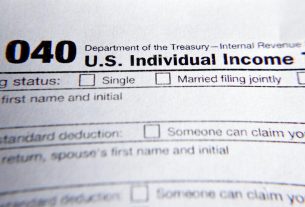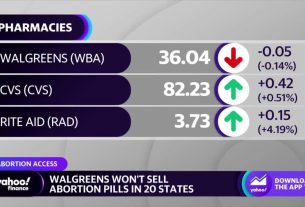To learn more about sustainable finance, watch the full video on Landscape TV.
Join us on 7 March for GLF–Luxembourg Finance for Nature: What Comes Next? The 6th GLF Investment Case Symposium.
Once upon a time, investors would focus single-mindedly on obtaining the greatest financial return, leaving social justice and the environment to fall by the wayside.
But the winds are rapidly shifting as the climate crisis exposes the financial sector to greater risks. After a period of rapid growth that saw sustainable investing break into the mainstream, regulators have responded by cracking down on greenwashing.
So, what does 2023 hold for sustainable finance – and how are its key players working to mobilize funds for restoration, climate and other green investments?
Here, Landscape News brings you a brief overview of the sustainable finance landscape today, including its many definitions, key concepts, processes and main actors:
What is sustainable finance?
Sustainable finance involves making investment decisions that consider not only financial returns but also environmental, social and governance factors. Also referred to as “green finance,” it is a broad term with multiple definitions depending on context.
The European Union, which is developing a bloc-wide classification system for sustainable activities, defines sustainable finance as “finance to support economic growth while reducing pressures on the environment and taking into account social and governance aspects.” It gives several examples of environmental considerations, including climate mitigation and adaptation, the conservation of biodiversity and the circular economy.
One important subset of sustainable finance is climate finance, which “seeks to support mitigation and adaptation actions that will address climate change,” according to the United Nations Framework Convention on Climate Change (UNFCCC). It can be either “local, national or transnational” and may be “drawn from public, private and alternative sources of financing.”

Why is sustainable finance important?
One of the most important ways to combat the climate crisis is to restore our planet’s degraded landscapes. Forests and agriculture make up over 30 percent of the solution to climate change – but they receive less than 3 percent of climate financing.
Ambitious restoration targets have already been set at the international level, with the Bonn Challenge aiming to bring 350 million hectares globally under restoration by 2030, while the U.N. Decade on Ecosystem Restoration is redoubling efforts to raise funds for restoration.
Nevertheless, humanity will need to spend an additional USD 600 to 800 billion per year to reverse the biodiversity crisis by 2030 – if that goal is even achievable at all. That’s in addition to the estimated USD 2.5 to 3 billion per year needed to achieve the Sustainable Development Goals in the Global South.
Plugging that massive finance gap will require a coordinated effort between the public and private sectors, from the local to the global level. As the sixth mass extinction accelerates and global warming breaks new records, the onus is on policymakers and financiers to rise to the challenge.

Who are the key providers of sustainable finance?
Source: DIE/GDI
Corporations are the largest source of climate-related funding, both through CSR initiatives and their investments in multiple sectors including renewable energy, transportation and infrastructure.
Banks provide a significant proportion of the financial resources that can be mobilized for green investments.
International financial institutions can support the scaling-up of green investments by testing new ways of financing, channeling funds toward sustainable development through mechanisms such as green bonds, and influencing global financial governance to give more support to sustainable development. These include green investment banks and development banks, which provide funding for sustainability- and development-related projects respectively.
International organizations such as the U.N., the OECD and the G20 only provide limited finance but set the agenda on sustainability issues at the international level and help coordinate sources of funding.
Climate funds, such as the Green Climate Fund, Adaptation Fund, Global Environment Facility and Climate Investment Funds, are multilateral funds for climate change adaptation and mitigation projects, funded through contributions from individual countries.
National governments determine the amount of public funding earmarked for green investments, as well as institutional support for them. They can also support the design of dedicated domestic investment vehicles such as national climate and environmental funds.
Central banks and regulatory authorities can also guide the actions of the financial sector through policies and regulations that define what can be considered a sustainable investment or require companies to disclose their climate risks.
Institutional investors, such as pension funds, sovereign wealth funds and insurers, are another important group of private-sector financiers.
Stock exchanges also often specialize in green and sustainable investments. For example, the Luxembourg Green Exchange (LGX), attached to the Luxembourg Stock Exchange, operates as a dedicated platform for green, social and sustainable securities.

How does sustainable finance attract investors and catalyze private investment?
Source: GEF
The two main financial instruments in sustainable finance are equity and debt.
- In the early stages of a project, equity financing is the main investment method used, and investors receive an ownership interest (stocks or shares) in the project in return for the amount of capital they invest.
- In later stages of a project, debt financing becomes the predominant investment method. Investors lend money to borrowers, and this money is repaid with interest.
Debt financing can take two forms: loans and bonds. A loan is a transfer of money from a bank to a company or individual, whereas a bond is a transfer of money from the public or market to a company that issues the bond. Bonds typically involve large sums (USD 100 million and above) and can be bought by the general public.
Green investment projects and their backers engage in a practice known as leveraging – reducing the perceived risk of a project in order to encourage private investors to back it. Leveraging strategies include using loan and credit guarantees and investing in junior equity or subordinated debt.
Investors often manage risk using loan or credit guarantees from public finance institutions. This transfers the risk of the investment from the investor onto the institution, which serves as a loan guarantor. Given the lower risk to the investor, the lender can then pay a lower interest rate on the loan, reducing its capital costs and increasing profitability.
There are two types of stock: common stock (also called junior equity) and preferred stock. In the event of liquidation, holders of preferred stock must be paid out before those of common stock, therefore are exposed to lower risk. To attract other potential equity investors, climate funds and impact investors invest specifically in common stock to absorb some of the risk for other investors who purchase preferred stock.
In investments that do not involve equity, climate funds and impact investors can take the most junior debt position in a company (known as subordinated debt) to ensure that they are paid last in the event of liquidation. Like investing in junior equity, this also absorbs some of the risks for other investors.
How can sustainable finance help support restoration?
There is a small but growing network of impact funds supporting forest and landscape restoration (FLR), and the social impact platform GatherLab lists over 50 such funds globally focusing on regenerative agriculture and forestry.
In the private sector, initiatives such as 1t.org and the New York Declaration on Forests are catalyzing corporate funding for restoration, while the U.N. Convention to Combat Desertification (UNCCD) is leveraging public money to raise private finance for land degradation neutrality. National funds, such as conservation trust funds and forest funds, also provide crucial funds for sustainable land use.
Meanwhile at the international level, the Food and Agriculture Organization (FAO) is supporting forest and landscape restoration in 18 countries. IUCN operates this green fund for ecosystem-based adaptation, while the World Bank and partners are working to promote sustainable value chains for eight major agricultural commodities.
FAO and UNCCD have identified several work streams that policymakers can unleash to mobilize resources to support FLR:
- Mainstream FLR in state budgets: funds can be earmarked for restoration initiatives, kept in check through public expenditure reviews, and FLR can be integrated into national accounting. In the field of development aid, donor countries can also provide funds specifically to support FLR.
- Set up appropriate funding mechanisms: these can include national environmental or forest funds or public incentive schemes (such as payments for ecosystem services), as well as support for local approaches.
- Engage the private sector: policymakers can work with companies to promote voluntary commitments through corporate social responsibility (CSR) schemes. They can attract investors by developing marketplaces for FLR, reducing the risks of FLR investments (e.g. through backing them with public institutions), or gathering data on FLR costs and benefits. Policymakers can also attract investors indirectly by supporting private impact investment funds and layered funds.
- Build alliances and partnerships: these can be built at the international, regional, national or local level, ranging from global partnerships like the Bonn Challenge and New York Declaration on Forests to working with NGOs, small businesses and farmers at the local level.

A sustainable finance glossary
From asset classes to equities, finance terminology can often seem like a language of its own. Yet as the field of sustainable finance grows, expect this vocabulary to become ever more embedded into that of sustainability. Courtesy of the Stockholm Sustainable Finance Centre, the Global Environment Facility (GEF) and Investopedia, here’s a list of the most important sustainable finance terms to know.



